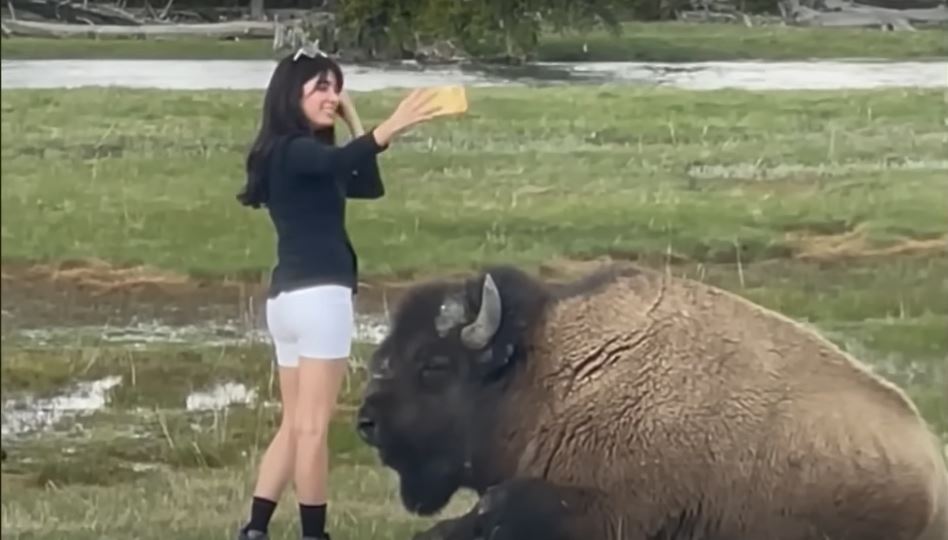On Saturday, a bison gored an 83-year-old woman. Specialists provided guidance on averting a comparable circumstance.

Large and magnificent, with coats the color of chocolate, bison reside in the lush green pastures of Yellowstone National Park.
Here, the air is crisp and the tall grass sways in the breeze. However, these animals have a fragile disposition that may be hazardous in an instant.
A bison that was defending its territory gored an 83-year-old South Carolina woman last weekend, according to park officials.
The animal’s horns lifted her approximately a foot off the ground, causing significant injuries. Investigations into the incident are still ongoing.
It was the most recent in a series of sad incidents that included both park visitors and the gregarious bison that dwell in herds.
A forty-year-old man sustained injuries in April after kicking one of the bison in the thigh and disturbing a herd of cattle.
Just a few weeks prior, a man had interacted with a newborn bison calf that needed to be put down and had entered a guilty plea to one count of feeding, stroking, taunting, frightening, or purposely disturbing wildlife.

According to Jon Grinnell, an associate professor of biology and an authority on bison at Gustavus Adolphus College in Minnesota, incidents such as this happen far too frequently.
He remarked, “It’s a sign of how unaccustomed people are to dealing with wild animals.” “They believe they are gentle creatures who will show them respect, but that isn’t always the case.”
Nevertheless, Mr. Grinnell suggested that learning about the creatures at Yellowstone could be helpful.
“They’re going to learn some dangerous behaviors if their only exposure to wildlife is through the internet,” he warned. “It’s much better to treat animals with respect, give them space, and refrain from having to take a selfie with the bison bull.”
With 5,000 or more living on public land, the bison at Yellowstone comprise the largest population in the nation. Bison herds, numbering in the hundreds when they travel freely over Yellowstone and into some neighboring areas of Montana, can number several dozen.
We discussed the dos and don’ts of seeing bison in Yellowstone with two bison specialists.
Should Yellowstone visitors be afraid of bison? According to Jeff Martin, an assistant professor of bison biology and management at South Dakota State University, there is no reason for humans to be afraid of bison, but they should still be treated with healthy respect when they are around them.
What is the appropriate viewing distance for bison? When approaching large animals such as bison, elk, bighorn sheep, and moose in close proximity to a campsite, trail, boardwalk, parking lot, or other constructed area, people should maintain a minimum distance of 25 yards, or 75 feet, according to officials from the National Park Service. Bears and wolves should be kept at least 100 yards (300 feet) away from humans.
How to handle a bison that you come across. Keep your cool. Mr. Martin instructed them to start backing away rather than approaching them. Avoid giving them a direct eye contact. Use the same routes if you come across them on a trail. Mr. Martin remarked, “Don’t make a big deal out of it.”
In July, bison are most active. The busiest times to see bison are from Memorial Day to Labor Day, which corresponds with summer travel. Mr. Martin remarked, “They are very protective of their babies.” Bulls became possessive of their prospective breeding partners later in the summer.